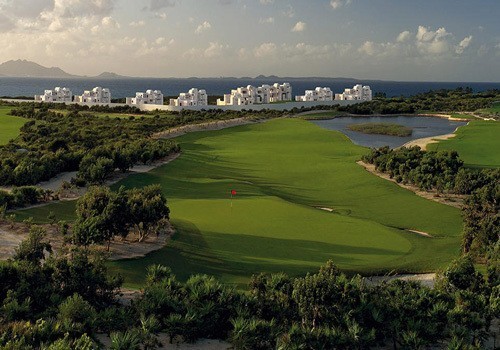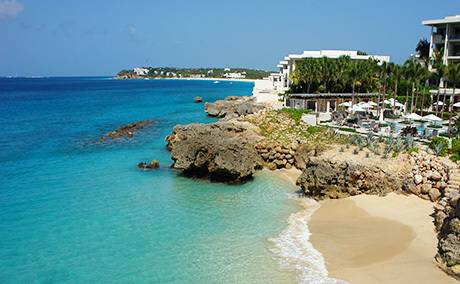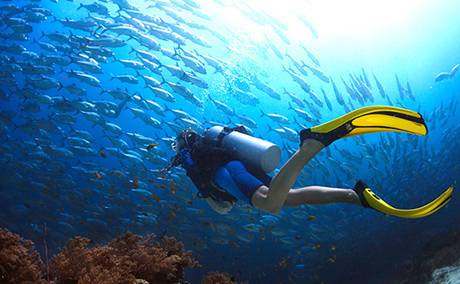Travel tips for St Martin/Maarten, Anguilla, St Barth & Saba
Here you can find some frequently asked questions and general info relating to travelling to Sint Maarten and the surrounding islands. For more detailed info on St. Martin, Anguilla, St. Barts and Saba, please view their individual pages. If you need help or advice on how to book a fast ferry ticket or hotel, click here to visit our most common Frequently Asked Questions (F.A.Q).



How is the weather and climate?
The region has a subtropical climate with a dry season from January to April and a rainy season from August to December. Temperatures remain stable throughout the year and rarely exceed 34°C (93°F) or fall below 20°C (68°F). The average sea temperature is 27°C (81°F) Thunderstorms can occasionally occur (with a mild risk of stronger tropical storms), and regular showers are experienced during wet season.
Are there any health precautions I should take?
There are no major concerns, though we advise a check up with your Doctor well in advance of travel for the latest advice and any necessary shots (which may depend on the country of departure)
Visa Requirements
Passports are required when visiting any of the islands in the region. It is also your responsibility to ensure you have the correct documentation/visa for your destination. Citizens of Western nations arriving in St. Maarten (including but not limited to the USA, Canada and European Union countries) are Visa exempt. Take a look at our travel tips pages for St Barts, Saba and Anguilla for more information on visa requirements. For a full list of nationalities and visa requirements please check the tourist board websites for each respective island.
Currency
The local accepted currency is the United States dollar, except on the french side of St. Martin and on Saint Barthélemy, which both use the Euro.
Getting around
The main mode of transport on land is by taxi, car rental or other rented vehicles such as quad-bikes. Inter island transport is best done by fast ferry or speedboat, and can be booked using the search box on our homepage. Alternatively, local flights are also available in small aircraft, usually with a seating capacity of around 20.
What are the voltage requirements?
French territory has European voltage and sockets, while Dutch and British territory conforms to U.S. standards.
- Dutch Sint Maarten: 110-volt AC, 60Hz, Type A & B sockets (same as U.S. & Canada)
- French St. Martin: 220-volt AC, 60Hz, Type E sockets (may require the use of adapters and transformers)
- Anguilla: 110-volt AC, 60Hz, Type A & B sockets (same as U.S. & Canada)
- Saint Barthélemy: Voltage is 220 AC, 60 Hz, Type E sockets (may require the use of adapters and transformers)
- Saba: 110-volt AC, 60Hz, Type A & B sockets (same as U.S. & Canada)
What is the time zone?
Atlantic Standard time (UCT - 4)
What are the best things to shop for?
There are a range of local products unique to each island, however the most famous products are the Guavaberry Rum, which finds its home on the Dutch side of Sint Maarten, and the glamorous fashion, jewellery and perfumery establishments on St. Barts. And best of all: Everything is Duty Free!




What should I bring?
Since it’s always warm in the Caribbean and often quite humid, “Not a lot!” is probably the best answer. Light cotton clothing, T-shirts, shorts and light dresses are best. Don’t forget your swimsuit!
A wide-brimmed hat and sunglasses as well as plenty of sunscreen are important. Insect repellent for protection against mosquitos and sand flies is also highly recommended. Sandals and open-toed shoes are fine, however if you plan on walking in the rugged terrain of St. Martin, St. Barts or Saba it’s a good idea to bring a light-weight pair of walking shoes. A pair of reef-walkers or some other type of waterproof sandal is ideal for wading around the coastline.
Boasting spectacular scenery, make sure you don’t forget to bring your camera and extra memory cards. Photographic supplies are available on the islands but it’s best to bring your own.
Departure Taxes and Port Fees
Departure taxes and port fees are mandatory when leaving each island. Methods of payment vary from CASH ONLY at customs desks to credit card payments upon check-in. The money is used to fund public services on each island and is usually not included in the ticket price for ferry/speedboat crossings.
Below is an overview of taxes and fees payable when booking your ferry tickets with StMartinbookings.com - please note that different boat companies have different policies regarding the collection and payment of departure taxes:-
-
Anguilla
Funtime Charters / Calypso Charters
Departure tax is CASH ONLY payable to the Government of Anguilla upon departure from Blowing Point Ferry Terminal:
Adult = US$36
Child = US$23 (5-12yrs) // US$11 (2-4yrs) - Security Tax // US$8 (<2yrs) - Security Tax
When travelling on a Same Day Return ticket, reduced rates apply:
Adults + Children (5-12yrs) = US$19 // (2-4yrs) = US$11 – Security Tax // US$8 (<2yrs) - Security Tax -
St Barts
Voyager
When travelling to/from St Barts, a US$15 departure tax is payable upon check-in at the Voyager office/counter, whether travelling one way or return.
Great Bay Express
When travelling to/from St Barts, a US$15 departure tax is included in the ticket price, whether travelling one way or return.
The Edge
For Day trips and Return trips to/from St Barts, a US$20 departure tax/port fee is ALREADY INCLUDED in the ticket price. When travelling One way from St Maarten or St Barts a US$10 departure tax/port fee is ALREADY INCLUDED in the ticket price.
-
Saba
The Edge
For Day trips and Return trips to/from Saba, a US$20 departure tax/port fee is ALREADY INCLUDED in the ticket price. When travelling One way from St Maarten or Saba a US$10 departure tax/port fee is ALREADY INCLUDED in the ticket price.
Dawn II
Departure tax is CASH ONLY payable upon check-in at the Dawn II counter:
For Day trips from Saba and Return trips, a US$20 departure tax applies. When travelling One way from St Maarten or Saba a US$10 departure tax applies.





